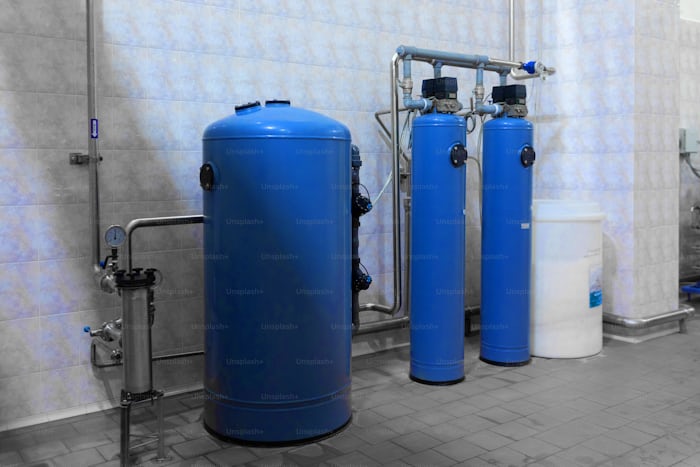Clean, safe drinking water is essential for human health and well-being. With increasing concerns over water contamination and pollution, many households and industries are turning to advanced filtration systems to ensure the water they consume is free from harmful impurities. One of the most effective and popular methods for water purification is the reverse osmosis system. This technology has gained widespread use for its ability to provide high-quality water by removing a wide range of contaminants. But what exactly is reverse osmosis, and how does it work? Let’s explore the science behind it and its benefits for home and industrial applications.
What Is Reverse Osmosis?
Reverse osmosis (RO) is a water purification process that removes impurities from water by forcing it through a semipermeable membrane. This membrane allows water molecules to pass through while blocking larger particles such as salts, bacteria, viruses, and other contaminants. The result is purified water that is free of many harmful substances commonly found in tap water or untreated sources.
To understand reverse osmosis, it’s important to first grasp the concept of osmosis. In osmosis, water naturally flows from an area of low solute concentration to an area of high solute concentration through a semipermeable membrane, aiming to equalize solute levels on both sides. Reverse osmosis, as the name implies, reverses this process by applying external pressure to force water from a region of high solute concentration (contaminated water) to an area of low solute concentration (purified water), leaving the contaminants behind.
How Does a Reverse Osmosis System Work?
A typical reverse osmosis system consists of several stages, each designed to remove different types of impurities from the water. Here’s a breakdown of the key components:
- Pre-filtration: Before the water reaches the reverse osmosis membrane, it passes through pre-filters, such as sediment filters and carbon filters. The sediment filter removes large particles like dirt, sand, and rust, while the carbon filter eliminates chlorine, chloramines, and organic compounds that could damage the RO membrane or affect the taste and odor of the water.
- RO Membrane: The heart of the system is the semipermeable membrane. As water is forced through the membrane under pressure, contaminants like dissolved salts, heavy metals, bacteria, and viruses are trapped, while purified water passes through. The membrane typically removes up to 99% of total dissolved solids (TDS), making the water significantly purer.
- Post-filtration: After passing through the RO membrane, the water may undergo additional filtration stages to further improve its quality. Many systems include a carbon post-filter to remove any residual tastes or odors before the water reaches the storage tank or tap.
- Storage Tank: Since the RO process is relatively slow, most systems include a storage tank where purified water is collected for later use. When you turn on the faucet, water is drawn from this tank rather than directly from the RO membrane.
- Final Polish Filter: Some systems include a final filtration stage before the water reaches the tap. This filter ensures that any remaining impurities are removed, providing the cleanest possible water for drinking or cooking.
Benefits of a Reverse Osmosis System
There are several compelling reasons to consider installing a reverse osmosis system in your home or business. Below are some of the most significant benefits:
- Superior Water Quality: RO systems provide some of the highest-quality water available, removing a wide range of contaminants, including:
- Heavy metals (lead, mercury, arsenic)
- Harmful chemicals (chlorine, pesticides, herbicides)
- Microorganisms (bacteria, viruses)
- Salts and minerals
- Pharmaceutical residues
This makes RO water safer to drink and use for cooking, particularly for individuals with compromised immune systems or those living in areas with poor water quality.
- Improved Taste and Odor: Many people find that RO water tastes better than tap water because it lacks the chemicals and minerals that can impart an unpleasant flavor. By removing chlorine and other odor-causing substances, RO systems also improve the smell of water, making it more enjoyable to drink.
- Cost-Effective: While there is an initial investment in purchasing and installing a reverse osmosis system, it can save money in the long run by reducing or eliminating the need to buy bottled water. Additionally, since RO systems require minimal maintenance (only periodic filter replacements), ongoing costs are relatively low.
- Eco-Friendly: Using a reverse osmosis system helps reduce the environmental impact of plastic waste from bottled water. By providing a reliable source of purified water at home, fewer plastic bottles are used and discarded, which contributes to environmental conservation efforts.
- Health Benefits: Drinking water that is free from contaminants like lead, mercury, and arsenic can significantly reduce the risk of health issues, particularly in vulnerable populations such as children and pregnant women. Additionally, removing bacteria and viruses from the water supply helps prevent waterborne diseases.
Limitations of Reverse Osmosis Systems
While reverse osmosis systems offer numerous advantages, there are also some limitations to consider:
- Water Waste: The reverse osmosis process produces wastewater, known as brine, which contains the concentrated contaminants that were removed from the water. For every gallon of purified water, an RO system may waste several gallons of water, depending on the system’s efficiency. However, newer models have become more efficient, and some systems include a water-saving feature that reduces waste.
- Removal of Beneficial Minerals: In addition to removing harmful contaminants, RO systems also remove beneficial minerals like calcium and magnesium. While this isn’t necessarily harmful, it can affect the taste of the water and may reduce the overall mineral content of your diet. Some systems include a remineralization stage, which adds these minerals back into the water to improve taste and nutritional value.
- Slow Filtration Rate: Reverse osmosis is a relatively slow process compared to other filtration methods. This is why most systems include a storage tank to ensure that purified water is available when needed. However, if demand exceeds the system’s capacity, there may be delays in accessing purified water.
- Initial Cost and Installation: While RO systems can be cost-effective in the long term, the initial cost of purchasing and installing the system can be a barrier for some households. Additionally, professional installation may be required, which adds to the upfront cost.
Applications of Reverse Osmosis Systems

Reverse osmosis technology is used in a variety of applications beyond just home water filtration. Some common uses include:
- Industrial Water Treatment: Industries such as pharmaceuticals, food and beverage production, and electronics manufacturing use reverse osmosis to purify water for production processes and ensure the quality of their products.
- Desalination: Reverse osmosis is the leading technology used in desalination plants, which convert seawater into freshwater. This is particularly important in regions where freshwater resources are scarce, and desalination provides a vital source of potable water.
- Agriculture: Farmers use RO systems to treat water for irrigation, particularly in areas with high salinity in the water supply. This ensures that crops receive clean, safe water, improving agricultural yields and reducing the risk of soil degradation.
- Aquariums and Aquatic Systems: Reverse osmosis systems are commonly used in aquariums and fishkeeping to provide pure water free from harmful chemicals and pollutants, creating a healthier environment for marine life.
Conclusion
The reverse osmosis system is a powerful and effective method for purifying water, making it suitable for a wide range of applications, from home use to industrial processes. By removing contaminants and improving the taste and quality of water, RO systems offer a reliable solution for anyone concerned about the safety of their water supply. Although there are some limitations, such as water waste and the removal of beneficial minerals, the benefits of cleaner, safer drinking water far outweigh these drawbacks. Investing in a reverse osmosis system can enhance your quality of life, protect your health, and contribute to a more sustainable future.





